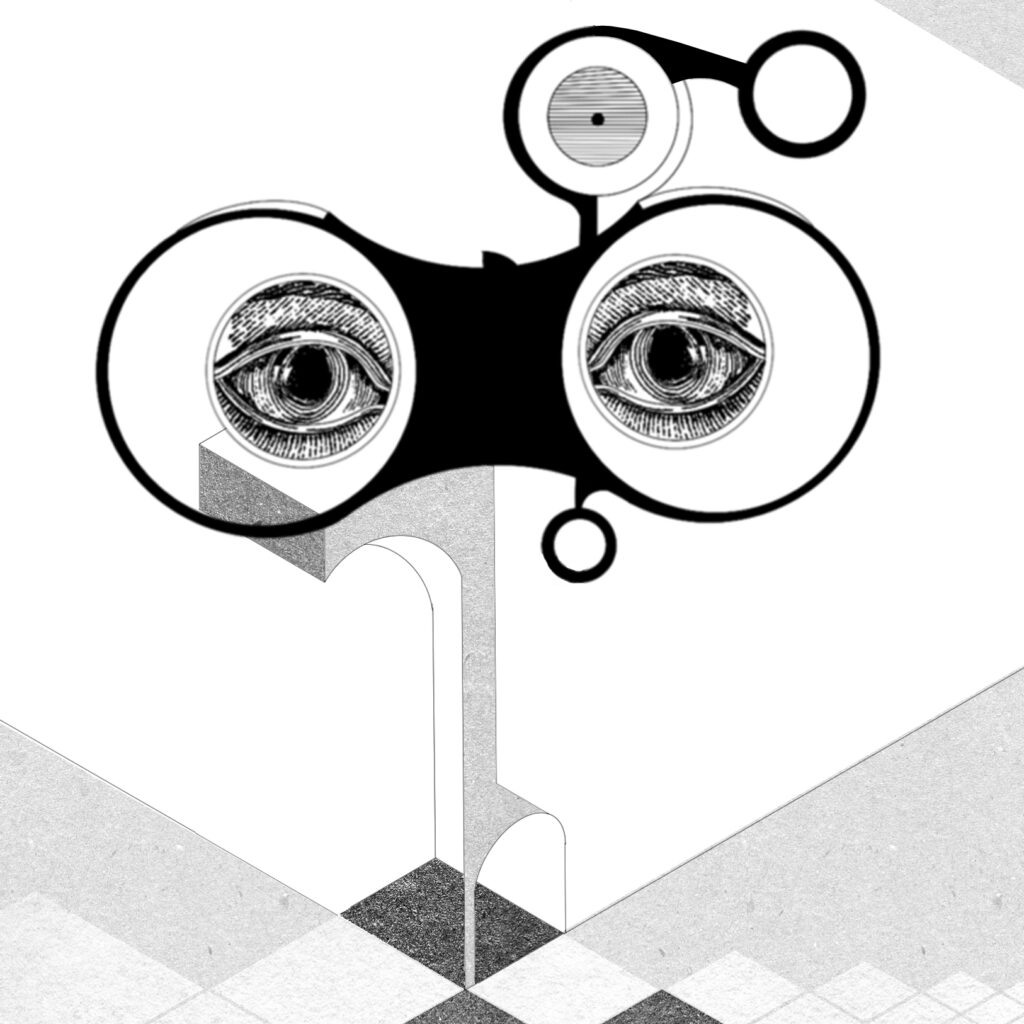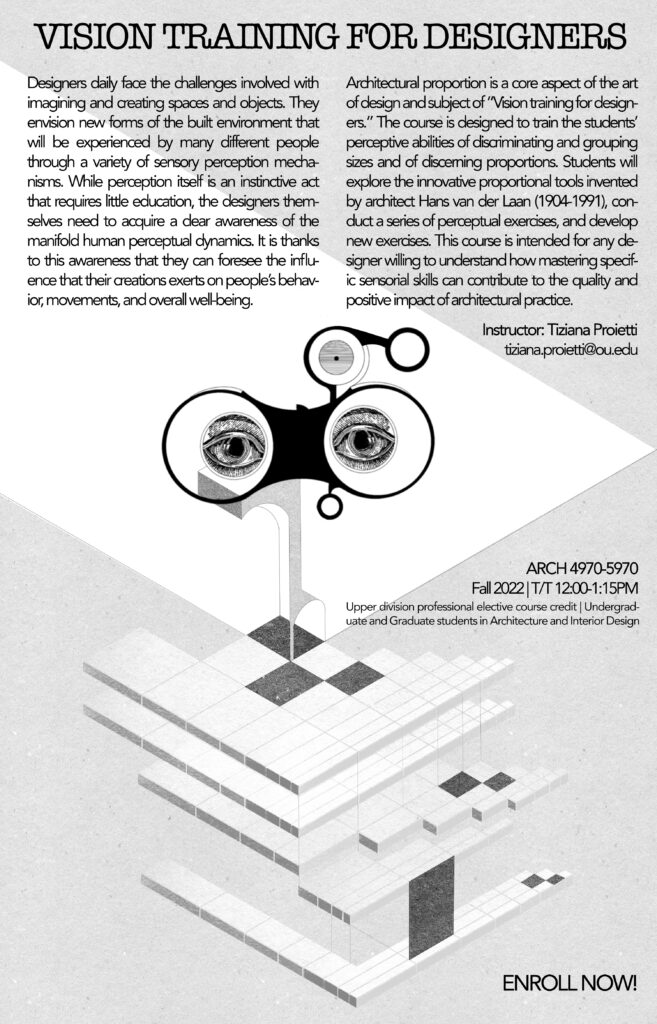
In their daily work, designers are required to imagine and create spaces and objects. Central to these skills is sensory perception, which is an instinctive act that requires no education on the part of the perceiver. But the designer strives to develop a clear awareness of perceptual processes: their dynamics and limitations. It is thanks to this awareness that the designer can foresee the influence of their creations on users’ experience, behavior and well-being. Architectural proportion is one of the core aspects of the art of design, which places it at the center of Vision training for designers. The goal of the course is to train students’ perceptual ability to discriminate properties of tectonic elements that include relations among distances, sizes, and proportions. Students will explore innovative proportional instruments, such as the tools invented by the Dutch architect Hans van der Laan (1904-1991), conduct a series of perceptual exercises, and develop new exercises. This course is intended for any designer willing to understand how mastering specific sensory skills can contribute to the quality and positive impact of architectural practice.

Vision Training for Designers
C. Gibbs College of Architecture, University of Oklahoma, Fall 2022
Tiziana Proietti
ARCH 4970 – 5970